‘Under cover’ indoor farming industry takes root in Nevada
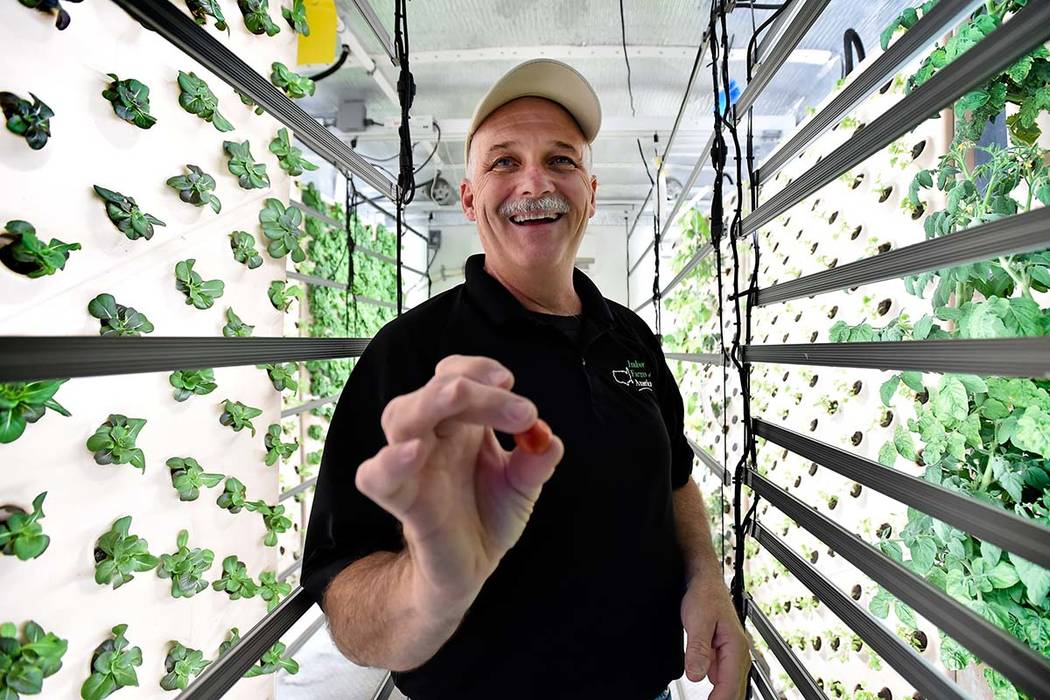
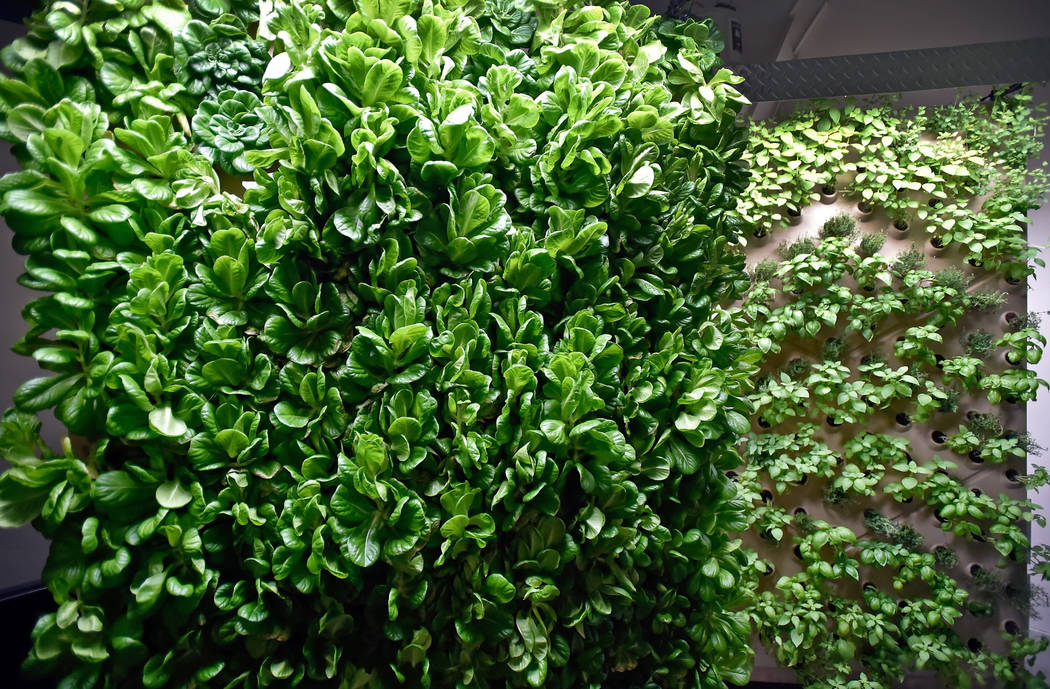



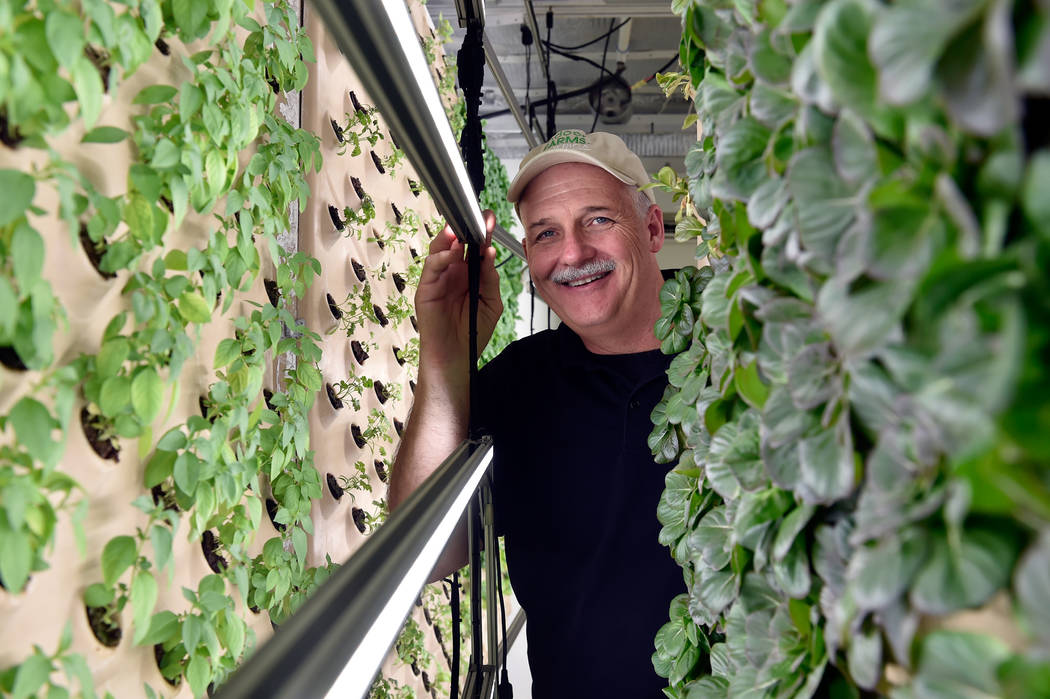
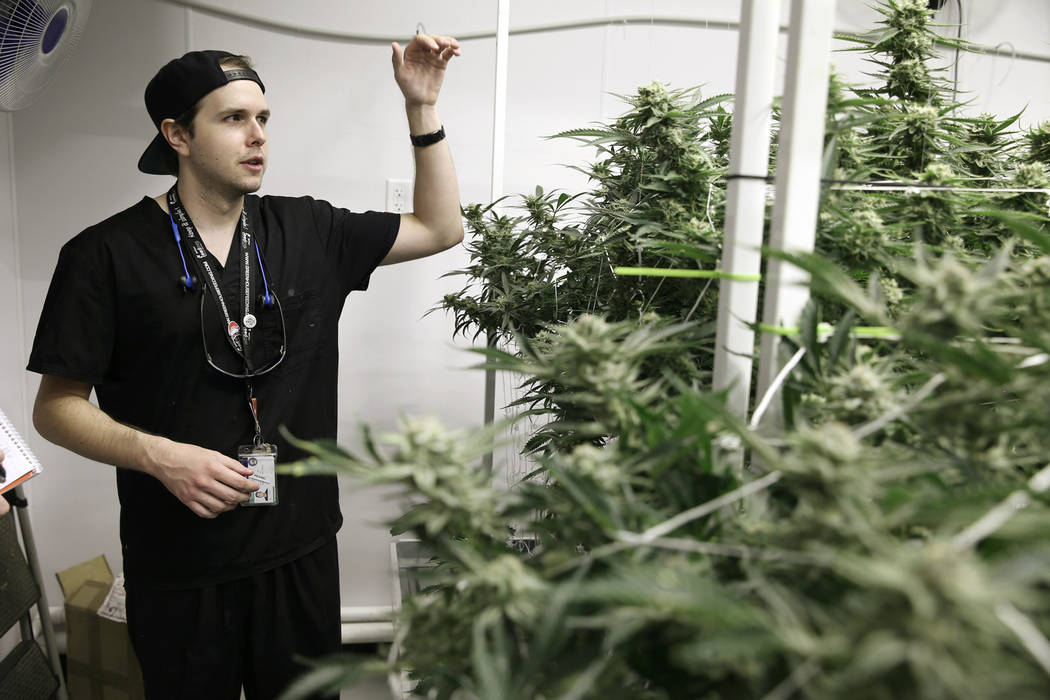
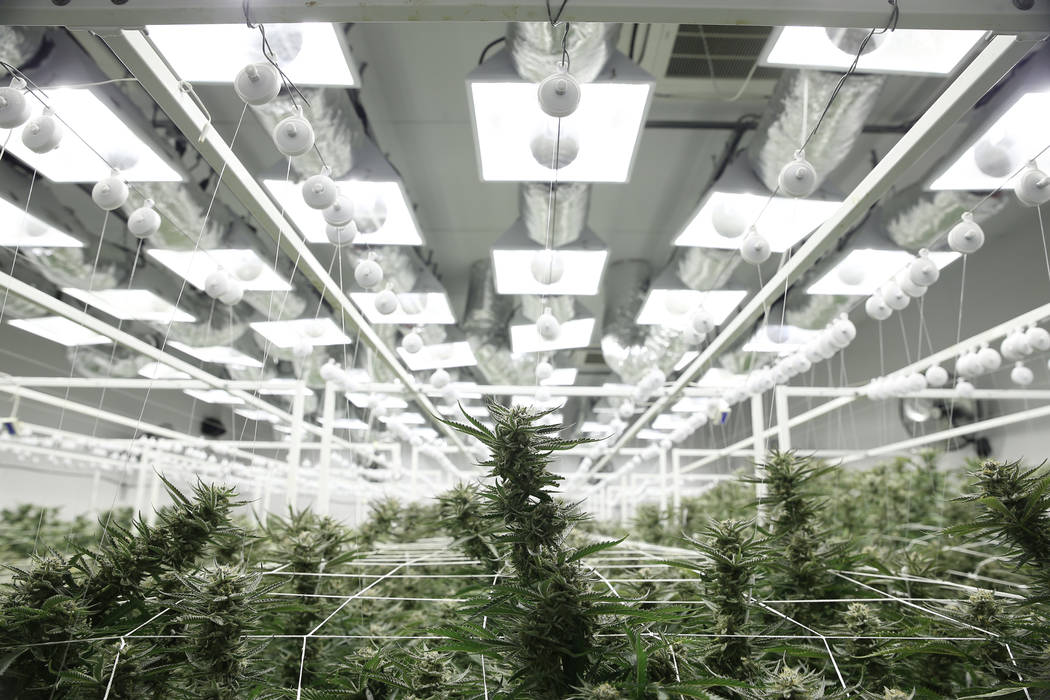


Las Vegas’ farming industry might seem as dry as the desert, but Southern Nevada’s agriculture sector is just a bit harder to find than most.
To discover rows upon rows of basil, green butter lettuce, mint and even cannabis in Las Vegas, you will have to step inside.
Southern Nevada’s indoor farming industry has been growing in recent years, with some attributing its success to the expanding national cannabis industry.
With population in Southern Nevada booming, local experts say indoor farming has the potential to provide local produce and increase food security within the state.
“The indoor ag industry has grown quite a bit,” said Jennifer Ott, plant industry division administrator for the Nevada Department of Agriculture.
According to data from the Nevada Department of Employment, Training and Rehabilitation, the number of private companies in Clark County the state classifies as growing food “under cover” jumped from at least three in 2014 to at least 42 last year.
Part of that growth “is due to a huge amount of education across the U.S. regarding indoor ag and the benefits of indoor ag,” Ott said. “There’s more research being done, more adoption in the industry.”
Many investors have been focusing that research on the marijuana industry, which is more profitable than growing crops such as lettuce or basil.
“Cannabis is a very high-profit commodity, to where technology is definitely going to follow that kind of profit,” said Jared Krulewitz, co-founder and vice president of marketing at Urban Seed Inc., an urban agriculture technology company headquartered in Las Vegas.
Many of the advancements made through this research — which include improvements to LED lights — are applicable to a variety of plants. That means the indoor farming industry as a whole is seeing benefits, said Shane Terry, CEO of vertically integrated cannabis company TapRoot Holdings Inc., between Spring Gate Lane and Village Center Circle.
“When cannabis came around and there was a higher value of crop on the market, R&D started to make sense,” Terry said. “Both worlds are benefiting from it.”
David Martin, CEO of Las Vegas-based indoor farm equipment supplier Indoor Farms of America, estimated LED lights were about 60 percent of the initial cost of the indoor farm when it started in 2014 and the most expensive part of operating costs.
A 2017 report from virtual agronomist platform Agrilyst, which had 150 responses from indoor growers around the world, found that energy — primarily lighting costs — made up about 25 percent of total operating expenses at farms larger than 10,000 square feet and 12 percent at smaller farms.
Today, the lights used at Indoor Farms of America are customized and display the entire spectrum of LED light at a fraction of the cost.
“Up until last year, I didn’t believe in LEDs,” said Mike Tsairis, director of operations at Redwood, a cannabis cultivation facility off East Charleston Boulevard and Las Vegas Boulevard South. “They didn’t produce the yields, they weren’t producing flowers that had high potency. … The technology has been advancing and changing rapidly throughout the past five, 10 years.”
Dependent on imports
Indoor farming is on the rise, but that doesn’t mean Nevada is nearing self-sufficiency. The state imports a majority of its food, and a 2014 report called the Las Vegas Sustainability Atlas found that 92 percent of all food in Las Vegas is shipped by truck and only 8 percent of food available in grocery stores and markets are locally grown.
Even with the additional costs of importing produce from states such as California, the goods are often cheaper than what local indoor farms can produce.
“They have cheap labor. It’s tough to compete with,” Martin said. But the “price is getting to be closer to par … and even if its a little bit pricier, it’s locally grown and clean and it’s supporting Nevada jobs.”
Krulewitz said the price of their crops are often cheaper than organic alternatives. The company sells its produce — mostly leafy greens — to local restaurants, including Strip restaurants such as Border Grill at Mandalay Bay, Sage at Aria, Michael Mina at the Bellagio and downtown restaurants like Vesta Coffee Roasters, PublicUs and The Kitchen at Atomic.
“It’s really hard for (chefs) to find great ingredients” with a lack of local farmers and about 99 percent of local food imported, Krulewitz said. “It’s a really large culinary market. You have the Strip, which has an average of 25 restaurants per resort, so there is a huge demand for food.”
Changing the local industry
Martin believes indoor farming can replace outdoor farming models with certain crops like lettuce. But overall, he views it as a supplemental industry to traditional, outdoor methods. Others agree.
“I don’t see this as being the size and type of operation that would take over the world,” said Doug Busselman, executive vice president of the Nevada Farm Bureau Federation. “A lot of the production I’ve seen for indoor ag is very niche. … It’s not something that could sustain an overall diet.”
Still, indoor farming gives areas like Southern Nevada the opportunity to take on a larger role in the state’s agriculture industry.
“We want people to know that you can grow crops, even in this climate,” Martin said.
Las Vegas’ population growth has been fast-paced in recent years. In 2017, data from the U.S. Census Bureau showed Clark County was the third-fastest-growing in the nation for population gain; it welcomed an average 127 new residents per day between July 1, 2015, and July 1, 2016.
Krulewitz believes growth in urban farming goes hand-in-hand with the population boom.
“Las Vegas is really growing up as a city, and I think this is just a piece of that evolution,” he said. It’s “becoming a little more sustainable, a little more resilient. And to do that, you have to help feed your community.”
Contact Bailey Schulz at bschulz@reviewjournal.com or 702-383-0233. Follow @bailey_schulz on Twitter.













